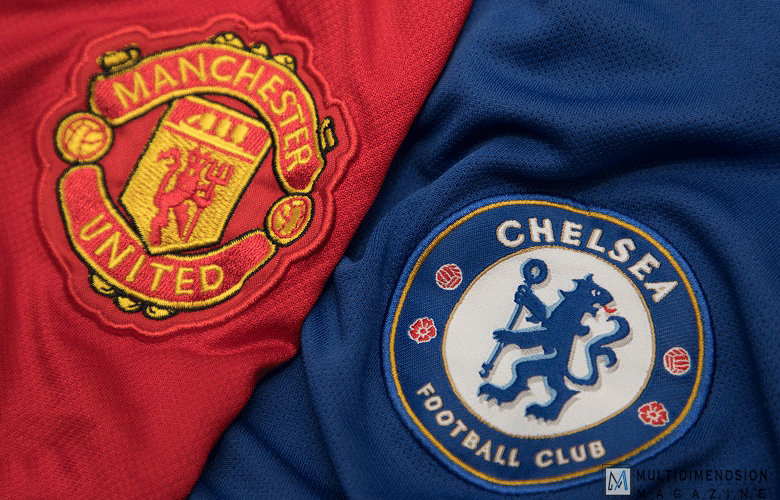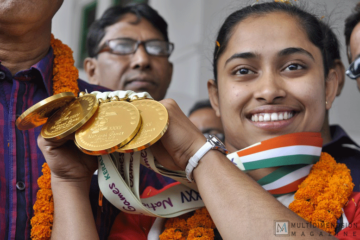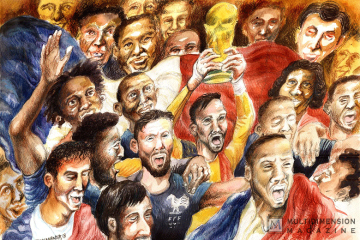Written By: Rohan Sengupta
Kolkata, India
Photo Credit: shutterstock.com
On the 11th of December 2016, the East Bengal Football Club (EBFC) club grounds witnessed one of the biggest sporting gatherings of the year when they hosted a Manchester United contingent of ex-players and club officials for a day. Aficionados of Indian football would perhaps be aware of East Bengal’s status as one of the most ardently supported and passionately vocal teams in the country. Aficionados of global football would certainly be aware of Manchester United’s fan following, across continents. The general mood surrounding the event was one of excitement at the prospect of meeting some stalwarts of the two clubs and having the chance to interact with them. It was perhaps to be expected. But surely there was something more to this coming together of footballing behemoths in the city of Kolkata?
One can think about numerous stakeholders within such an arrangement- East Bengal Football Club and Manchester United- being direct benefactors, Indian Football in general; perhaps even the Indian Super League (ISL). The organizers of the event, Kolkata Manchester United Supporters Club (KMUSC), the official Manchester United fan club in Kolkata perhaps were the most instrumental in ensuring the success that the event was. Supporters clubs in India have been engaged in organizing matchday screenings for their respective parent clubs. Although events such as this are far from regular occurrences, supporters clubs, over the past decade, have emerged as a hugely popular site of football fandom across India. The burgeoning of fan associations across cities, in more ways than one, poses questions of being a football fan- what really does it mean to be a football fan in India today?
One of the earliest supporters clubs established in India was the Chelsea India Supporters Club- established in 2006, officially recognized in 2009. Presently, there exist 28 other Chelsea supporters clubs across different cities. I have myself been associated with the Chelsea India Supporters Club- Kolkata in an informal capacity. Although there are different categories of operation within these supporters clubs- bronze, silver, gold, being a fan for many of my friends here, has come to mean being a fan of Chelsea Football Club. For others, allegiance is spread out in different leagues- one can be a fan of Chelsea and Mohun Bagan, for example. The degrees of intensities vary.
The debate- between the national and the global has been ensuing for decades now. But given the kind of fan following of European teams in India, especially those of the Premier League teams, it would be quite daft to ignore the 160 million people who follow the league. For many, it is a more aesthetically brand of football that attracts them towards these leagues. What this has often resulted in is a bizarre blame game when it comes to citing the reasons why Indian football is not a global force, yet.
On the 1st of June 2018, the Mumbai Football arena witnessed a completely one-sided match between the senior men’s football teams of India and Chinese Taipei. The official stadium turnout for the concerned match, however, stood at 2,569 people according to various media outlets- a figure quite paltry in comparison to the average attendance of other sponsored football leagues in the country. This prompted Sunil Chhetri, the captain of the Indian football team to post a video on Twitter the next day that was instantly shared, responded to and circulated across digital platforms such as Twitter, Facebook, Instagram and WhatsApp. Following the video, numerous celebrities voiced their support for the national football team including the captain of the men’s cricket team, Virat Kohli. The subsequent matches for the remainder of the tournament featuring the national team were all sold out and the players took to social media expressing gratitude to the people who had turned up.
“Please come and support us, encourage us, watch us, abuse us, criticize us, talk about the game, go back home, have discussions and make banners but please get involved. This is a very, very important time and juncture in Indian football and football in India needs you guys”, Chhetri remarked. A popular backlash was targeted at the European leagues and the fan clubs of these leagues in particular on social media. The anger, reeking of the hyper-nationalist fervour palpable across the country made its presence felt with Indian football as well. Fan following of Indian football was supposed to be over and above any other kind of fan following.
Such anger seems misdirected at best and jingoist at worst. While fan clubs in India have often been pitted against national clubs, the situation on the ground is completely different. More often than not, the existence of fan clubs is purely recreational, as opposed to feeding the nationalist sentiment associated with Indian football. The case of KMUSC is exactly a case in point for this. At the same time, local fan clubs of Indian football teams, such as the East Bengal Ultras or the Supporters club for the national team, serve a different set of purposes altogether. One is also curious to then ask, what were some of the reasons for Indian football’s failure in the years preceding the setting up of these fan clubs?
In more ways than one, Chhetri was right- this indeed is an extremely important time for Indian football and football in India. One of the major reasons for this is precisely the fact that ‘Indian football’ and ‘Football in India’ no longer mean the same thing. The Indian football team has witnessed a steady increase in support- going by television viewership and watershed events like the FIFA u-17 men’s World Cup. Football in India, over the past decade, has come to encompass different aspirations of support- the regional, the national and the global. Such a climate concerning the sport has been unprecedented. The Indian Super League (ISL) adds further impetus as far adding glitz and glamour to the quotient of Indian football is concerned, despite many (me included) remain skeptical about its broader relevance and structure.
The stakes are steadily increasing when it comes to Indian football and Football in India. Public opinion concerning the ‘growth’ of Indian football, predominantly pitted against the de facto national sports Cricket, Football is now being shaped in its own image. This is a step in the right direction for the sport in India- a necessary step for any sport’s proliferation across urban and rural landscapes of India. Fan clubs, although a solely urban phenomenon, has definitely set the ball rolling towards that end.




